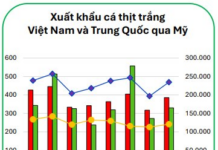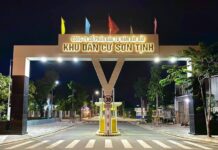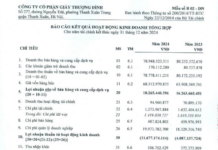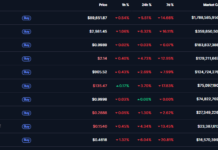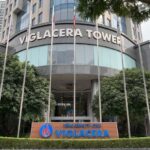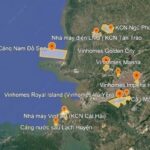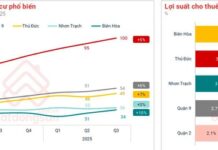HCM City’s Real Estate Market: New Opportunities Arise with Urban Expansion and Infrastructure Development
At the seminar “From Ho Chi Minh City to the Satellite Cities: New Opportunities for Real Estate” organized by Cafeland on August 22nd, experts asserted that the city’s urban development strategies, including the recent merger, will open up a plethora of opportunities, with the formation and advancement of satellite cities taking center stage.
Dr. Tran Dinh Thien, former Director of the Vietnam Economic Institute, emphasized that after nearly four decades of renovation, Vietnam has realized its aspiration to rise, achieving a growth rate that has garnered global recognition.
He cited that in just the first seven months of this year, the economy grew by an impressive 7.52% despite a volatile global context. However, behind these positive figures lie some unresolved issues that require explanation.
While credit has been aggressively pumped into the market, with a 16% growth target for the year, equivalent to approximately VND 2.5 quadrillion, the capital turnover has only reached 0.6, less than half of the normal level. This indicates a significant amount of stagnant capital, not yet effectively utilized. In this context, Ho Chi Minh City’s real estate market, with its expanded scale post-merger, can become the vanguard to attract and activate this capital.

Mr. Vo Huynh Tuan Kiet, Director of Residential Marketing, CBRE Vietnam, presents at the seminar
Experts predict a more positive outlook for Ho Chi Minh City’s real estate market due to the increasingly synchronized regional infrastructure. The formation of ring roads and transportation axes towards Long An (former), Can Gio district (former), and other satellite cities will create room for the development of large-scale projects.
Mr. Vo Huynh Tuan Kiet, Director of Residential Marketing at CBRE Vietnam, revealed that property prices have surged by over 35% in just the past six months. Currently, the average apartment price in Ho Chi Minh City stands at approximately USD 3,300 per square meter, significantly higher than the average income of USD 7,500 per year. Primary market prices range from VND 80-85 million per square meter, while secondary market prices are around VND 50-55 million. Meanwhile, new landed properties have soared to VND 230 million per square meter, with older properties still commanding prices of up to VND 190 million.
With limited supply and a scarcity of large-scale projects, the market pins its hopes on positive changes post-merger. For sustainable market development, experts advise developers to carefully consider their product segments. While the high-end segment offers attractive profit margins, its quantity is limited. The majority of market demand revolves around affordable housing that caters to the actual needs of the vast majority of the population.
In tandem, Ho Chi Minh City is embracing the super-city model with TOD (Transit-Oriented Development) planning to create mega-cities along the beltway, connecting with peripheral areas.
Ho Chi Minh City’s Real Estate Market: Attracting Foreign Investors
Dr. Su Ngoc Khuong, Senior Director of Savills Vietnam, asserted that Ho Chi Minh City will continue to lure foreign investors to high-end segments such as Grade A offices and serviced apartments. In reality, despite market fluctuations, Grade A office occupancy rates have consistently hovered around 90%, surpassing the overall market average of 80%.
As central land resources become increasingly scarce, their value soars. Meanwhile, serviced apartments have quietly emerged as a stable investment channel, offering attractive returns of up to 7%, making them a magnet for FDI.
Which Areas Saw the Biggest Rise in Apartment Prices Post-Merger?
The merger with Ho Chi Minh City has set new price levels for primary apartments in the suburban areas. In Ho Chi Minh City, the average primary apartment price reached its peak, surging by 29% year-on-year. Surrounding provinces also witnessed notable increases: Binh Duong with a 14% annual rise, Dong Nai with 15%, and Long An, which emerged as the new hotspot, saw a staggering 90% escalation in prices year-on-year.
Expanding Horizons: Why $40 Billion Isn’t Enough for Ho Chi Minh City’s Metro Network
“Ho Chi Minh City’s expansion plans are ambitious, with a proposed metro network expansion to over 1,000 km. This massive undertaking presents significant challenges regarding funding, human resources, and management models, requiring careful consideration and innovative solutions to ensure successful implementation.”
“Vinhomes Divests Entire Stake in Its Over-5,000-Billion-Dong Subsidiary in Hai Phong”
On August 20, Vinhomes’ market capitalization surpassed the VND 400,000 billion mark for the first time. This remarkable milestone underscores the company’s strong performance and solid position in the market. With a diverse portfolio of innovative and sustainable developments, Vinhomes has established itself as a leading real estate developer in Vietnam, capturing the attention of investors and homebuyers alike.

















